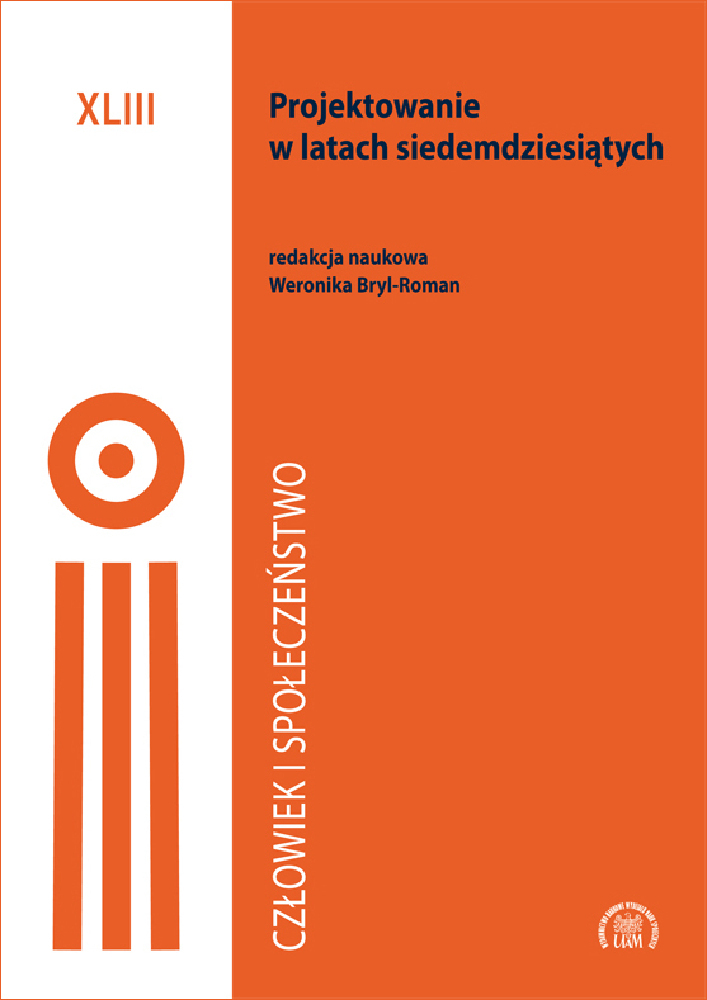Abstrakt
Katarzyna Rzehak, Mieszkanie dla każdej rodziny. Związki pomiędzy normatywami budownictwa wielkopłytowego lat 70. a projektowaniem mebli w tym okresie i stylem wnętrz „mieszkań w blokach” na przykładzie dokumentacji pokazu studialnego IWP na radomskim Osiedlu Ustronie [A flat for each family. Relations between the standards of large-panel construction of the 1970s and furniture design in this period as well as the “blocks of flats” interior style on the example of the documentation of IID studied exhibition made in the Ustronie housing estate in Radom], edited by W. Bryl-Roman, „Człowiek i Społeczeństwo” vol. XLIII: Projektowanie w latach 70. [Designing in the 1970s], Poznań 2017, pp. 127-144, Adam Mickiewicz University. Faculty of Social Sciences Press. ISSN 0239-3271.
The aim of the article is to indicate relations between the character and norms of large-panel system building of 1970s and the furniture design of that period, as well as the interior design of “flats in blocks”, based on the documentation of a case study presentation organized by the Institute of Industrial Design at the Ustronie Estate in Radom in 1971. The whole presentation, its complementarity, its attempts of satisfying various needs of families and finding spatial-furniture solutions for twelve “family” variants, shows, on the one hand, the pragmatism of researchers and designers from the Institute of Industrial Design and, on the other hand, their highly “humanistic” approach to the subject matter. Decisions concerning interior design, spatial layouts or used furniture clearly reflect the spirit of functionalism, an attempt of rationalization and subordination of furniture layouts to the spacial layout of the flat, with the greatest possible utilization of the available space and accumulation of functions. However, on the other hand, stylistic unification and the fact that the presentation had a very narrow range of products at its disposal give the egalitarian and mass production impression, which is a stigma of the centrally-governed economy. The discussion covered by the article is based on unpublished source materials coming from the archives of the Institute of Industrial Design.
Bibliografia
Jewdokimow M., Zmiany społecznych praktyk zamieszkiwania, Wyd. WSKW, Warszawa 2011.
Kaltenberg-Kwiatkowska E., Housing in Poland – „Interregnum” between Poor Socialism and…?, w: Transitional Housing Systems. East-West Dialogue on the New Roles
of Actors in Changing Housing Policies, red. T. Tanninen, I. Ambrose, O. Siksio, CIB, Bauhaus Dessau 1994.
Licencja
1. W momencie złożenia pracy celem rozpoczęcia postępowania w sprawie publikacji, Licencjodawca, zwany dalej Autorem, akceptuje wszystkie zasady umieszczone na stronie internetowej czasopisma “Człowiek i Społeczeństwo”, udzielając Licencjobiorcy, zwanego dalej Wydawcą, niewyłącznej i nieodpłatnej licencji na korzystanie z Utworu. Licencja zakłada tym samym brak ograniczeń terytorialnych, czasowych oraz ilościowych na następujących polach eksploatacji (art. 50 ustawy z dnia 4 lutego 1994 r. o prawie autorskim i prawach pokrewnych):
a. utrwalanie Utworu;
b. zwielokrotnienie Utworu drukiem i w wersji cyfrowej;
c. wprowadzenie do obrotu, użyczenie lub najem oryginału/zwielokrotnionych egzemplarzy Utworu;
d. publiczne wykonanie, wystawienie, wyświetlenie, odtworzenie oraz nadawanie i reemitowanie, a także publiczne udostępnianie Utworu w taki sposób, aby każdy mógł mieć do niego dostęp w miejscu i w czasie przez siebie wybranym;
e. włączenie Utworu w skład utworu zbiorowego;
f. wprowadzenie Utworu w postaci elektronicznej na platformy elektroniczne lub inne wprowadzenie Utworu w postaci elektronicznej do Internetu, Intranetu, Extranetu lub innej sieci;
g. rozpowszechnianie Utworu w wersji elektronicznej w Internecie, Intranecie, Extranecie lub innej sieci, w pracy zbiorowej, a także samodzielnie w formule Open Access w oparciu o licencję Creative Commons Uznanie autorstwa 4.0 Międzynarodowa Licencja Publiczna (CC BY 4.0), a także inną wersję językową tej licencji, lub którąkolwiek późniejszą wersję tej licencji.
2. Założenia licencji Creative Commons Uznanie autorstwa 4.0 Międzynarodowa Licencja Publiczna (CC BY 4.0), udzielają Wydawcy upoważnienia do kopiowania, zmieniania, rozprowadzania, przedstawiania i wykonywania Utworu jedynie pod warunkiem uznania autorstwa.
3. Wraz z dostarczeniem Utworu, Autor zobowiązuje się do wypełnienia, podpisania oraz odesłania skanu umowy
